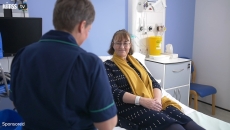Network Infrastructure
SPONSORED
At a hospital in Stuttgart, new performance management software from Siemens Healthineers has helped streamline systems utilisation as well as the entire patient pathway.
The Shared Responsibility Matrix aims to streamline the assurance process for privacy and security, helping assign responsibilities and reduce misunderstandings when healthcare organizations work with cloud service providers.
The expanded bandwidth would be a big boost to smartphone-based healthcare consultations, enabling doctors to remotely monitor a patient’s vitals and analyze the statistics in real time.
The Cerner system was scheduled to go live March 28, but was delayed due to the need for additional development of interfaces between the existing EHR, Cerner’s platform and VA's general IT infrastructure.
Three healthcare IT infrastructure experts offer best practices for ensuring the foundational technologies are running optimally.
Adventist Health White Memorial overhauls operating room processes with real-time location system and RFID tags, trimming costs and improving patient satisfaction.
One sophisticated attack method takes advantage of the trusted World Health Organization name to distribute an attachment that will install the AgentTesla Keylogger.
Take a tour of a leading EMRAM Stage 6 NHS trust in the UK to see how Cambridge University Hospitals are delivering safe, equitable and sustainable healthcare, while ensuring that the patient is placed at the center.
Ponemon Institute and Keyfactor say 60% of organizations aren't adequately maintaining their digital certificates and public key infrastructure.
The advanced cellular networking capabilities will enable the delivery of telesurgery services to veterans, allowing physicians to consult during surgery evan across the country, said VA Secretary Robert Wilkie.

